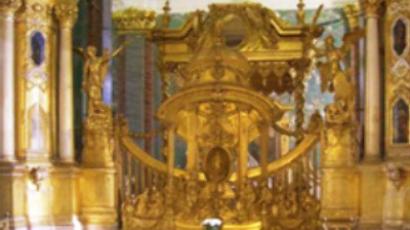Remains of missing members of Russia's Royal family found?
Archaeologists claim to have found the remains of the last two missing members of Russia's Royal family – Prince Aleksey and Princess Maria – who were executed by the Bolsheviks in 1918.
The bones were discovered outside the city of Ekaterinburg in Russia's Ural Mountains last month – and could well belong to Prince Aleksey and Princess Maria – the children of the last Tsar, Nicholas the Second.
If true, the discovery would end once and for all speculation that some members of the Romanovs survived.
Russian prosecutors have re-opened an investigation into the family's death.
Archeologists in the Sverdlovsk region in the Urals said what they had discovered – are allegedly remains of the last Russian Emperor’s son and one of the daughters.
The bones, which bear traces of severe injuries, as well as bullets and pieces of cloth, have been handed over for tests to a forensic laboratory.
“All the bullets were found next to the remains. So, we believe that originally they were in the soft tissue,” Dmitry Razhev, a Senior Researcher, mentioned.
“By means of genetic analysis of the bones it is possible to identify the gene responsible for haemophilia, the disease the Emperor's son, Prince Aleksey, suffered from. This is a genetic disease,” Nikolay Nevolin, the head of the local Forensic Department, commented.
The finding was made possible after another KGB document was made public.
Sergey Pogorelov, an anthropologistMost likely this second burial place is linked to the first one. Everybody knows who the remains could belong to.
The document contains the details of the family’s execution in 1918 given by its leader – they helped to precisely establish the burial place.
Nine people were shot dead. Sulphuric acid was poured over them and buried at a remote place near a road.
The two others – Prince Aleksey and one of the Princesses – were burnt and buried nearby.
“If the remains really belong to Aleksey and Maria, the explanations of the execution's leader become absolutely clear,” Edvard Radzinsky, a historian, noted.
According to anthropologist Sergey Pogorelov, “most likely this second burial place is linked to the first one. Everybody knows who the remains could belong to.”
But some researchers doubt the remains belong to the children of Nicholas the Second.
“They used a note by the leader of the execution team. It has been established the note was fake. And if it is fake, you cannot identify the true burial place,” said Vadim Viner, the head of Ural Romanov Centre.
The first attempts to find the remains of the royal family started back in 1976. Then archaeologists managed to discover three human skulls but it was kept secret and the Soviet authorities ordered them to be reburied.
In 1991 the burial place was excavated and tests were carried out. They proved the chance was high that the bones belonged to the family of the Tsar, but not the whole family – as the remains of the two members were still missing.
This went to promote the rumours that two of the Emperor’s children survived – and people from all over the world laid claims to be those royal offspring.
The remains of the other nine members were buried in Saint Petersburg almost a decade ago.
Scientists now have to prove whether this latest discovery is unquestionably of royal origin.













